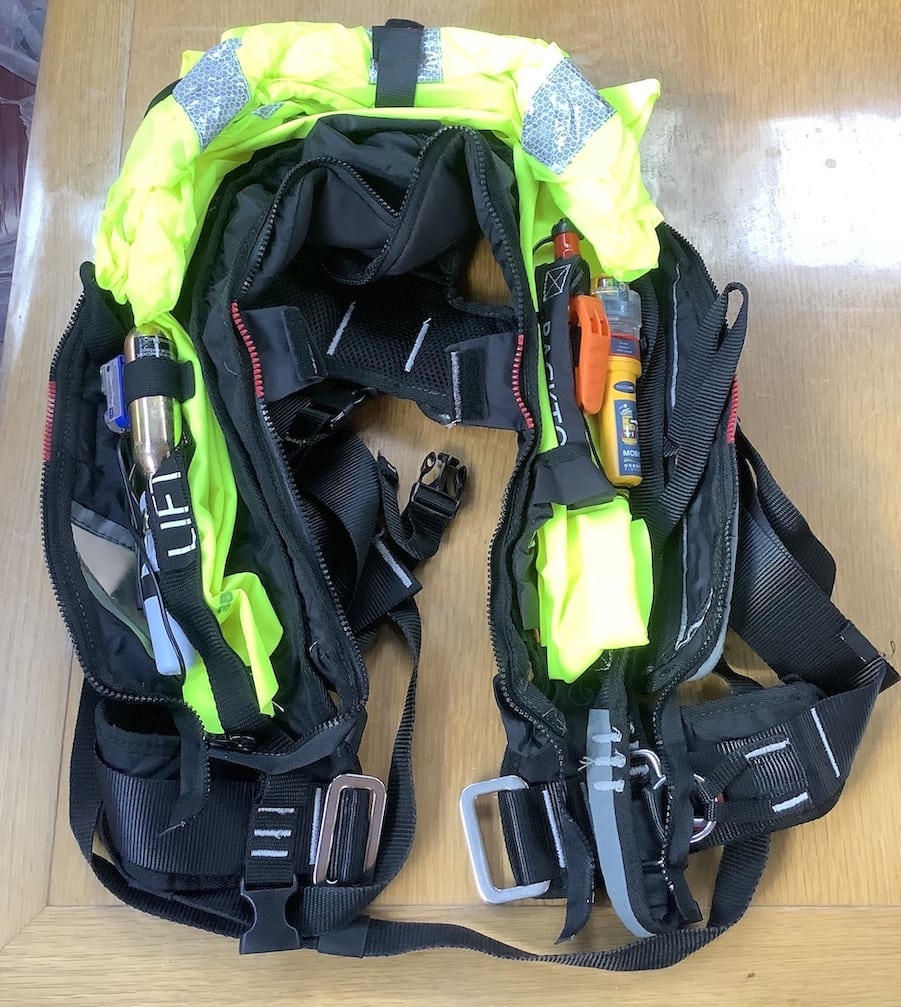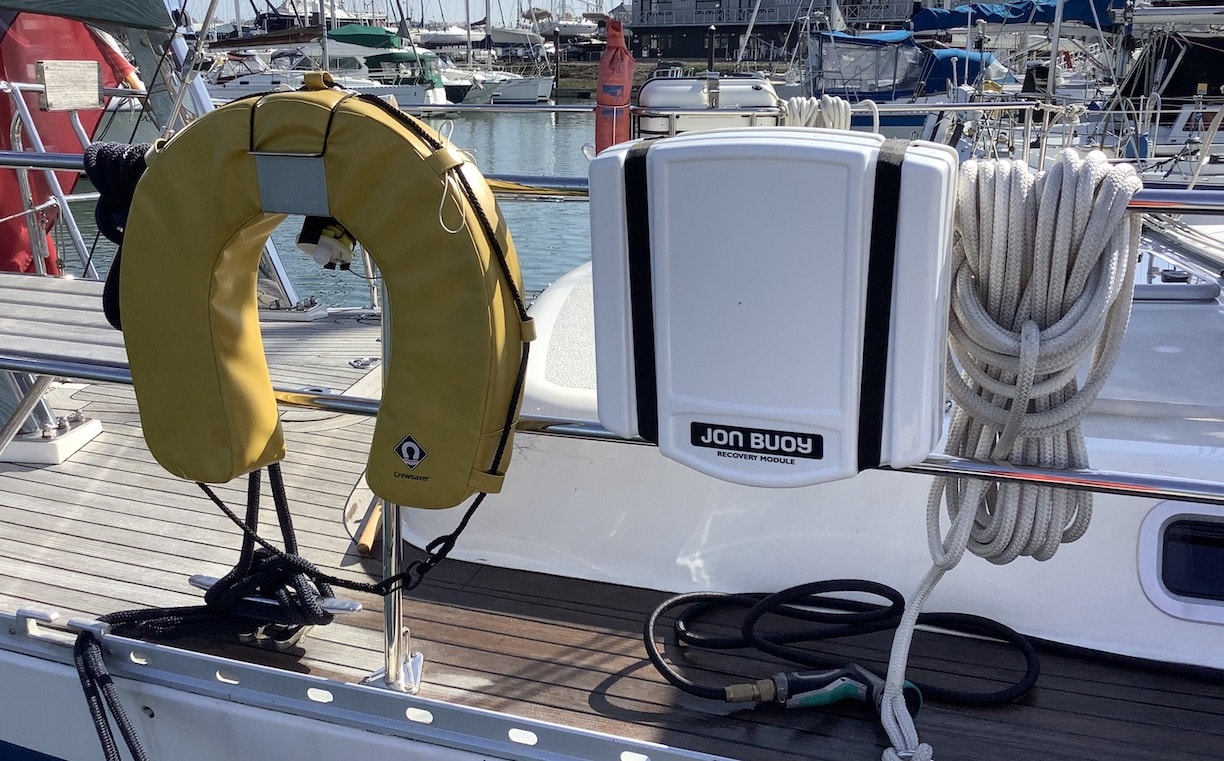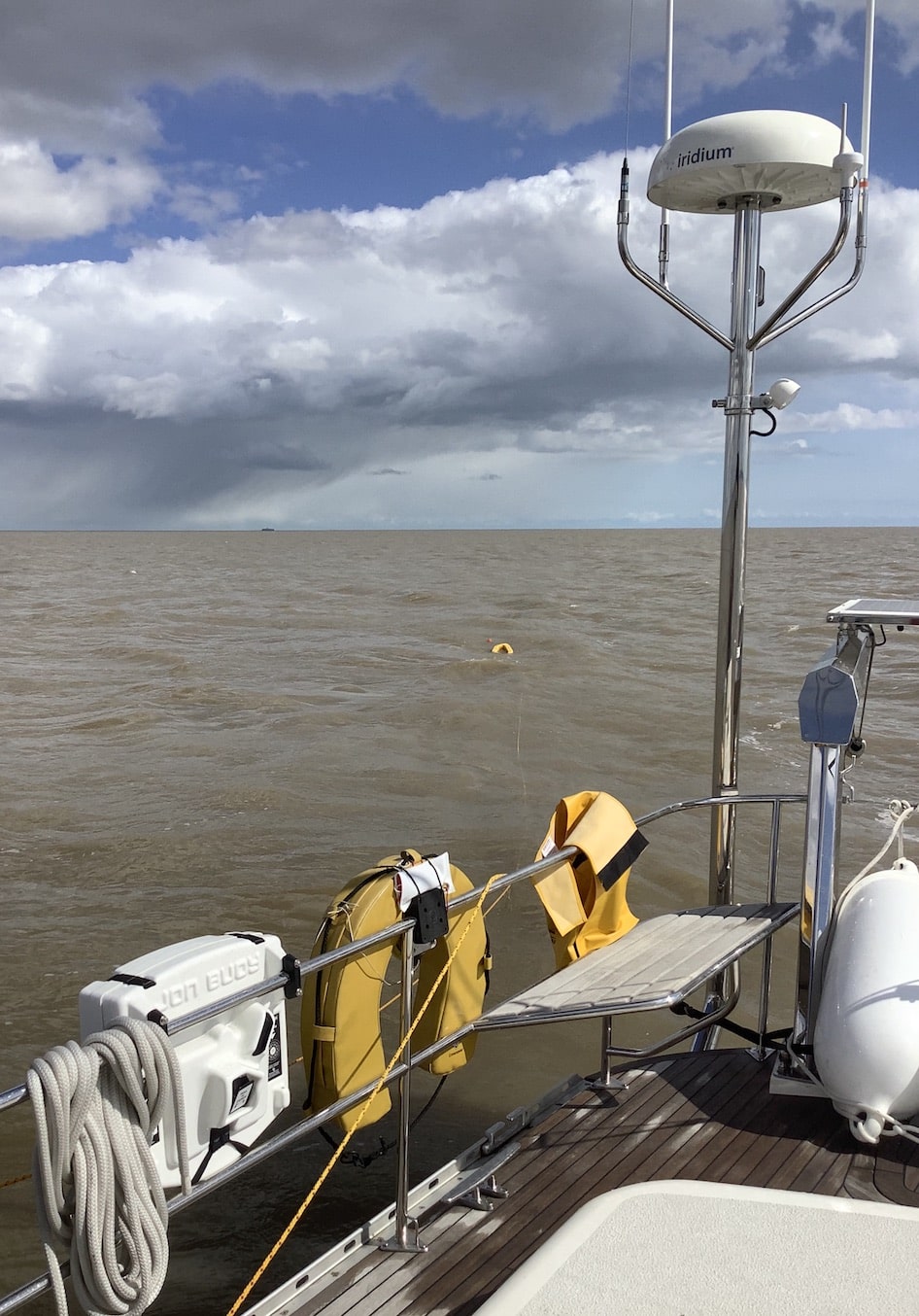This post is an updated version of one published by mistake a couple of weeks ago.
In ‘Safety first: Don’t fall off!’, I wrote about the things that we are doing to stop us falling overboard. Fingers crossed that will never happen, however, we still need to be prepared and have procedures and equipment in place to retrieve a Man Over Board (MOB).
Lifejackets
For the MOB, the first line of defence is his/her lifejacket.
Our Teamo lifejackets have a small gas cylinder inside them which automatically inflates the lifejacket when in the water. We know they work, as we got to test them on our safety course last year.
When in the water, the gas inflates a large luminous horseshoe shaped bladder. The lifejackets also have a spray hood which can be pulled down over the top of your head, in front of your face and down underneath the bottom of the bladder. This is a crucial feature when in rough water, as it stops the sea water splashing into your face and causing secondary drowning.
The lifejackets also come with a small water activated light and a whistle.
As additional features, we have added lumon patches. These are also water activated and light up the whole bladder, hopefully making a MOB easier to see.
Finally, we have added into our lifejackets personal AIS (Automatic Identification System) devices. We have chosen the Ocean Signal RescueME MOB1. They are water activated and will send a message to our boat and other nearby boats. This then triggers an alarm on board and logs the MOB’s position on the chart plotter.
NB: Check out Teamo’s website to see our lifejackets in action. It is especially interesting to see their unique system which allows a MOB to be towed on their back.


So, hopefully the MOB is now floating and can be seen. Next, we need to put things in place to retrieve him/her out of the water.
On the boat we have various items attached to the pushpit to aid the recovery. These range from a simple floating throw line and a horseshoe lifebuoy to a MOB recovery sling buoy and a Jonbuoy. All of these are ways of getting a line/floatation device to the MOB, as long as the person onboard can deploy them within range!
Recovery
So the MOB has now got some kind of line and is hopefully reattached to the boat. The next thing is to get him/her back on board. Escapade has a swim ladder at the back of the boat which the MOB could climb up. But it is more likely that he/she will be unable to climb it, due to shock, cold and possible injuries. The safest option will be to have some way of hoisting him/her back onboard.
We have set up a system of pulleys and blocks which enables us to use the boom to do this.

As you can see, we have plenty of options and what we do would depend on the situation at the time. However, it is all well and good having this equipment, but the key thing is that we must know what to do with it.
It is very difficult to find and retrieve a MOB even with a full crew, who can all take on different key roles during a rescue. It is, of course, much more difficult when there are only two people sailing. Only one person is left onboard to spot the MOB, safely stop the boat, turn it around, find the casualty and then put things in place to retrieve him/her. All of this in a very stressful situation, probably in poor weather and possibly in the dark. It is crucial that we have tried and tested procedures in place that we practise regularly, so that they become second nature.
Of course, every practise we do make sit very clear that the key point is – DON’T FALL OFF!!
Nerve-wracking stuff!
Hi Lindy,
Certainly is when you think too much about it!!
Our hope is that we will never use it…
Hope you and the family are well.
Caron
that is so scary a scenario! stay tied on to the boat at all times please!
Hi,
That’s the plan! That’s why we have jackstays and tethers. Safety first … don’t fall off!!
x
I hope you never have to use these skills. Very interesting read. X
Hi Steve,
So do I. It is not very easy and to be fair if it is dark and rough weather, chances of finding an MOB quickly are low…
The plan is to stay on the boat!!
x
I think you are both incredibly brave. I know you’re taking all precautions necessary, so that is reassuring. As others say hopefully you will never go overboard, but at least you are prepared just in case!
I really admire the way you have’ ‘thrown’ yourselves into this new venture!
Good luck and keep enjoying life to the full!
Hi Jane,
Great to hear from you. I hope you and the family are all well.
Many thanks for your comments. We have learnt so much in the past few years; our brains feel like bursting sometimes! We never realised how many things there were to think about, especially when we would like to sail long term and in more isolated places.
Martin is much braver than me…I get nervous/scared, but our boat is good and solid and we hope to be well prepared.
I keep up with school on the website and Facebook. You are all doing an amazing job. Keep up the good work!!